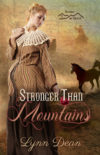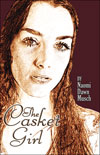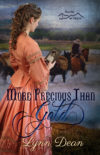We all have unique facial expressions and gestures. In a novel, these make each character different. Joe may frown when he’s thinking. Mary may pull her eyebrows together. Tracy might purse her lips and tap a finger against them. You might cross your arms and tap your foot.
We’ve discussed showing vs. telling in several lessons. This is an important aspect of writing. I can tell you about my trip to the beach, but you understand it better when I show you a picture. You were not there to taste the salt, see the waves, feel the sun, touch the powdery sand, or hear the call of the seagulls. In a novel, we seldom have pictures. You must experience each character’s actions and emotions through the word pictures the author paints.
When a writer shows a clear picture via words, the reader sees the image. As you write, make the scene play like a movie clip or a series of snapshots. The story comes through the eyes of one character—the point of view character in that scene.
How do you show an action? I could say that Jane was angry. If I describe her as red-faced, throwing toys, yelling, and stomping around the room, you get a picture of her anger.
Describing a facial expression or a gesture is often necessary. Do his eyes light up when he smiles at his toddler? Does she stare at the ground when her mother scolds her for stealing from the cookie jar? Did silent tears roll down her cheeks when she lost her pet, or did her chest heave with sobs? Was he leaning casually against the wall with his arms crossed? These examples evoke an image in your mind. They show the action.
Become a people watcher. Observe actions and facial expressions at school, in church, on the streets, and in restaurant. Write them down and practice painting the image with words so your reader sees what you have seen.
Exercise:
Show these actions in a paragraph without naming the emotion.
- Joy
- Anger
- Fear
- Sorrow
















I sat quietly in the corner with my eyes cast to the ground. How could they make me move here? Didn’t they understand I didn’t want to leave Memphis. My chest grew heavy, like the air had all been sucked out of it. Don’t call on me, I begged Mr. Druff, with my eyes. I hate that everytime I speak I’m supposed to be brilliant. I hate that everytime I speak they all know I’m new to the north. I could try and blend in, but I don’t want to. I’d rather just sit in silence and hope to move back home.
Great way to show shyness, homesickness, that out-of-place feeling we all dread. And you did it without naming a single emotion. 🙂
Writing in first person as you have done makes it easier for some writers to convey emotion. Sometimes when I’m writing a difficult passage, I’ll write it in first person so that I can concentrate on how I would feel if I were the character. Then I can edit it into third person by changing the pronouns as needed.